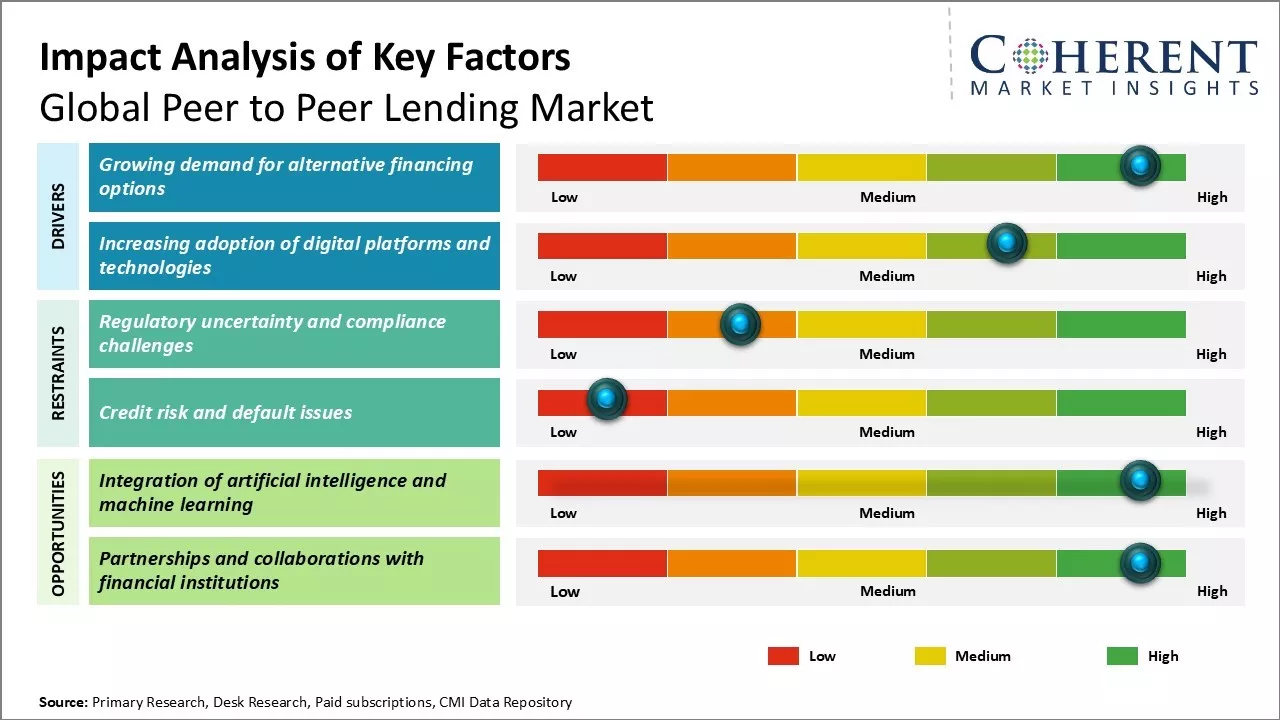The Global Peer to Peer Lending Market is estimated to be valued at USD 176.52 Billion in 2025 and is expected to reach USD 698.34 Billion by 2032, exhibiting a compound annual growth rate (CAGR) of 21.7% from 2025 to 2032.

To learn more about this report, Request sample copy
The Peer to Peer Lending model allows individuals to borrow and lend money without the intervention of a traditional financial institution. Both individuals and small businesses are increasingly utilizing this alternative financing option to access funds.
Market Driver - Growing demand for alternative financing options
There is an increasing segment of population which is looking for quick and hassle-free credit options when in need of short-term funds. The traditional banking system often fails to cater to such small-ticket credit requirements in a timely and cost-effective manner. Lengthy documentation processes, high interest rates, and strict eligibility criteria exclude many such individuals and businesses who are otherwise credible borrowers. Peer to peer lending platforms have emerged as a viable alternative by addressing some of the key limitations of banks. They are able to provide quick turnaround times for loan applications and approvals by leveraging digital tools for identity verification and risk assessment. Documents are digitally uploaded and verified online instead of physical submission and processing of paperwork.
Interest rates on peer to peer loans tend to be lower than bank loans or credit cards. This is possible because costs of operations are cheaper for online lenders as compared to traditional lenders who have large branch networks to maintain. Overheads are lower which gets passed on partially in the form of lower interest rates to borrowers. Individual lenders also have flexibility to choose riskier but higher yielding loan opportunities. Repayments are made directly online on a predefined schedule which ensures timely debt servicing. Borrowers get access to competitive funding opportunities in a structured process without having to visit multiple lending sources physically. These features have strengthened peer to peer lending as preferred sources of credit for small businesses, salaried individuals, and other unconventional profiles.
Joining thousands of companies around the world committed to making the Excellent Business Solutions.
View All Our Clients